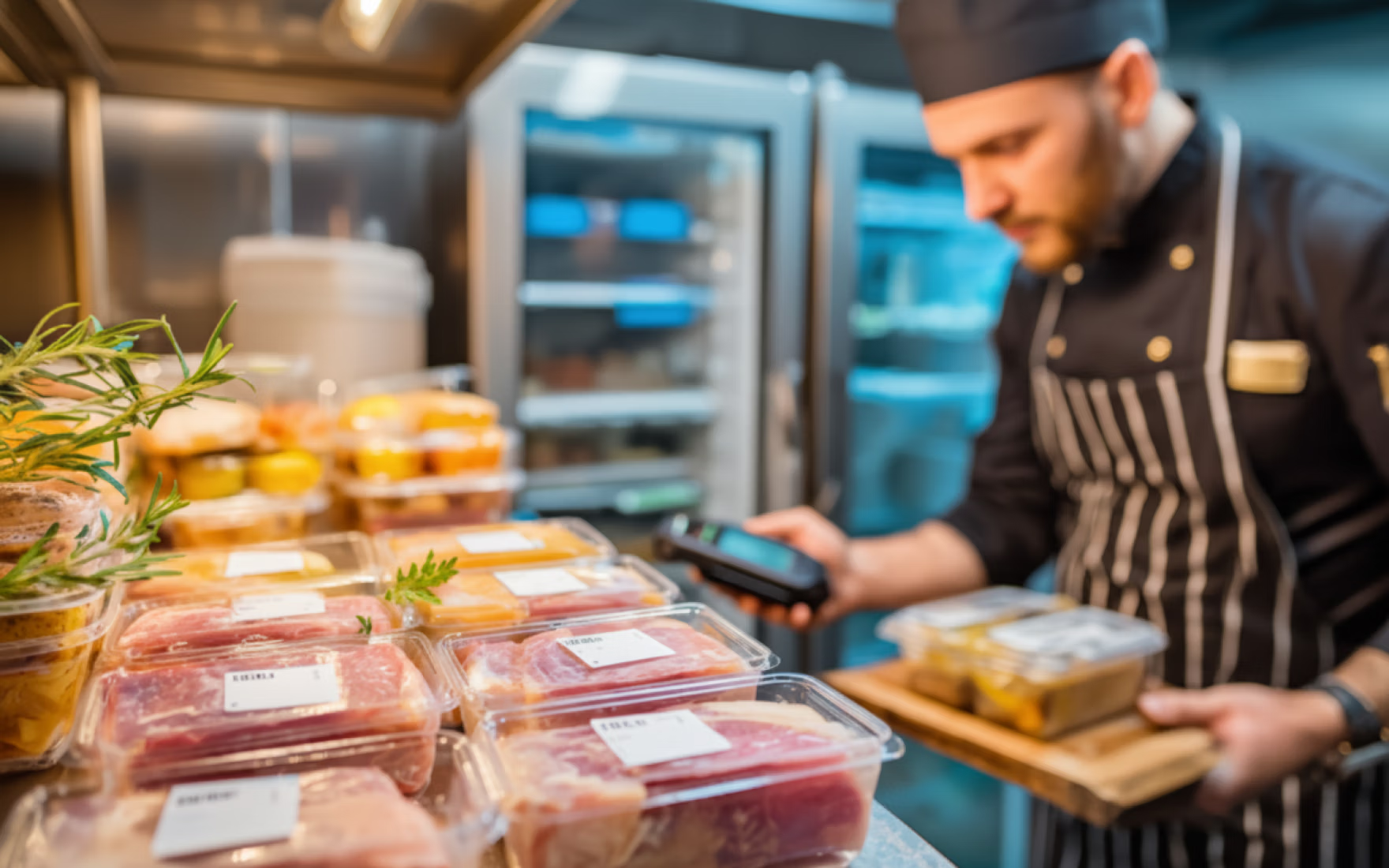Is Lab-Grown Chicken the Future of Sustainable Dining?

Over the past few years, the restaurant industry has experienced a sizzling demand for sustainable and ethical food choices. With concerns surrounding environmental impact and animal welfare, many people have turned to vegetarianism and veganism. Between 2004 and 2019, the number of vegans in the U.S. increased by 30 times. Now, about 10% of adults in the U.S. identify themselves as either vegan or vegetarian. Diners are no longer satisfied with just a tasty meal — they’ve also begun to crave transparency and responsibility from restaurants.
In response to this shift, scientists have discovered a revolutionary solution: lab-grown meat. Rather than the traditional farm-to-table model, this technology cultivates chicken meat in a controlled lab setting. While it may sound like something out of a sci-fi movie, lab-grown meat is slowly popping up on restaurant menus as a niche offering.
Could lab-grown meat be the future of the restaurant industry? In this article, we’ll be exploring the topic of lab-grown meat and whether it could be a viable and sustainable option for your restaurant business.
What Is Lab-Grown Chicken?
Lab-grown chicken, also known as cultured or cell-based chicken, is meat that is cultivated in a sterile lab using real chicken cells. A small sample of cells is collected from a chicken and fed a nutrient-rich solution. These cells are then placed in an environment that mimics the conditions within a living chicken, which allows them to multiply and form muscle tissue that’s remarkably similar to real chicken meat.
The concept of lab-grown meat has been around since the early 2000s, but the technology only made its public debut in 2013 at a London news conference. Since then, Singapore was the first country to approve lab-grown chicken in 2020. In the U.S., lab-grown meat received the stamp of approval from the U.S. Department of Agriculture (USDA) in June 2023 for two California-based companies — GOOD Meat and Upside Foods.

How Does Lab-Grown Chicken Enhance Taste?
When it comes to taste, lab-grown chicken has the potential to be just as delicious, if not even better, than traditionally raised poultry. The controlled lab environment and gene editing allow scientists to fine-tune certain factors, such as fat content and muscle fiber composition. This results in lab-grown chicken that has optimized taste and texture while keeping it consistent and customizable. In comparison, traditional chicken often varies in taste and texture because of differences in diet, breed, and living conditions. Having the ability to engineer a specific flavor profile means that lab-grown chicken could be tailored for diverse palates and cater to a wider demographic.
What Are the Ethical Benefits of Lab-Grown Chicken?
Traditional poultry farming often raises concerns about animal welfare. Chickens raised for meat are typically confined to small cages with limited space. Every year, about 60 billion chickens are killed for meat, with the average chicken living for an average of only 42 days on factory farms. Lab-grown chicken eliminates the need to raise and slaughter live animals, reducing these inhumane practices. Since lab-grown meat is cultivated from a small sample of cells, no animals are harmed in the process.
The concerns surrounding traditional poultry farming go beyond animal welfare and even extend to environmental impact. It contributes to deforestation, water pollution, and greenhouse gas emissions. A single 5-ounce serving of chicken breast results in:
- 2.16 pounds of carbon dioxide emissions
- 9.04 square feet of wildlife habitat loss
- 83.1 gallons of water use
Lab-grown chicken requires fewer natural resources and generates a significantly smaller carbon footprint, making it a sustainable alternative to traditional chicken meat.

What Are the Possible Ethical Considerations For Lab-Grown Meat?
While lab-grown meat is a promising new technology, it isn’t without its ethical considerations. Even though collecting cell samples is much less harmful to animals than raising them for meat, some animal rights activists may still consider it to be intrusive, arguing that all use of animals should be avoided. On the other hand, some consumers may be resistant to the idea of consuming meat produced in a lab, questioning the long-term health effects and environmental impact of widespread production.
Taking a look at the regulatory side, establishing strict industry standards for transparency, safety, and sustainability is crucial for ethical practices. Guidelines should be created to address concerns, such as:
- Promoting responsible sourcing of animal cells
- Ensuring that lab-grown meat meets or exceeds nutritional standards
- Regulating the use of antibiotics, growth factors, and other chemicals in the production process
- Minimizing environmental footprint
- Maintaining consumer trust with extensive testing and transparent labeling
Balancing these ethical considerations to build consumer trust will require substantial collaboration among everyone involved, from scientists and animal rights groups to regulators and industry leaders.
Is Lab-Grown Chicken Cost-Effective for Restaurants?
At this time, lab-grown chicken isn’t quite ready to compete with traditional chicken in terms of price. While the technology of cultivating meat in a lab has already been discovered, the process is still being refined, which makes it more expensive. Compared to other meat alternatives currently on the market, lab-grown chicken falls somewhere between pricier options like plant-based beef that mimics specific cuts and more affordable staples like tofu.
As technology advances and companies can benefit from economies of scale, the cost of lab-grown chicken is expected to drop significantly. Eventually, it could match the price of traditional chicken, making it a more accessible and sustainable option for restaurants that aim to remain ethical and cost-effective.

How Easy Is It to Source Lab-Grown Chicken?
Sourcing lab-grown chicken can be tricky at this time since the supply chain is still in its early stages. With only a handful of companies producing it, securing consistent and readily available inventory can be a challenge. Most early adopters of lab-grown meat are high-end restaurants that are at the forefront of this culinary revolution. As consumer demand continues to grow, suppliers are starting to ramp up production, and the lab-grown meat industry is expected to advance rapidly. If you’re looking to incorporate lab-grown meat in your restaurant, building strong relationships with suppliers and being flexible with initial order sizes will be the key to securing this niche ingredient.
Lab-Grown Chicken and the Future of Dining
There’s no doubt that lab-grown meat is revolutionizing the restaurant industry as we know it. It’s not just a new protein source, it’s a chance to redefine what sustainable and delicious dining looks like. Despite current challenges like high cost and limited availability, consumer interest is undeniable, and technology is quickly evolving to meet the anticipated demand. Restaurants that are early to incorporate lab-grown meat have the unique opportunity to shape the future of restaurant dining. While we don’t know exactly what the future holds, one thing is for certain: lab-grown chicken is on the brink of rewriting the menu, providing everyone a chance to savor a future that’s as flavorful as it is responsible.
As the restaurant industry adopts new innovations, staying ahead of the curve with the right technology can give you the upper hand. Discover how Push, the all-in-one people management solution designed specifically for restaurants, can streamline your operations and boost efficiency by booking a demo today.



